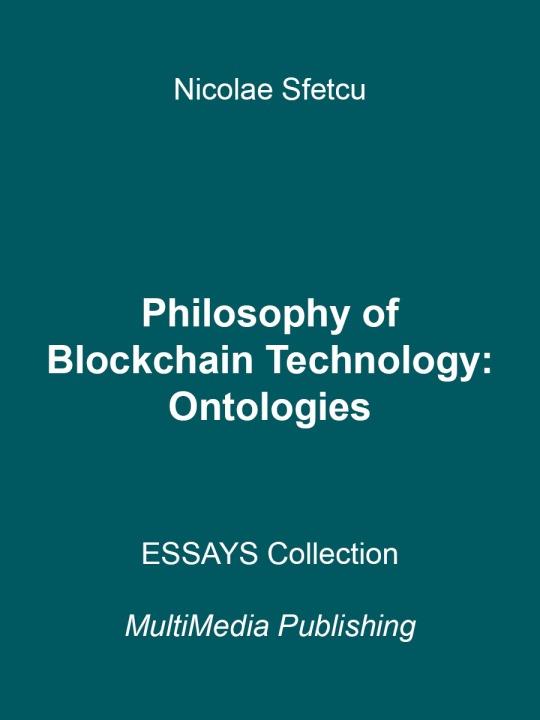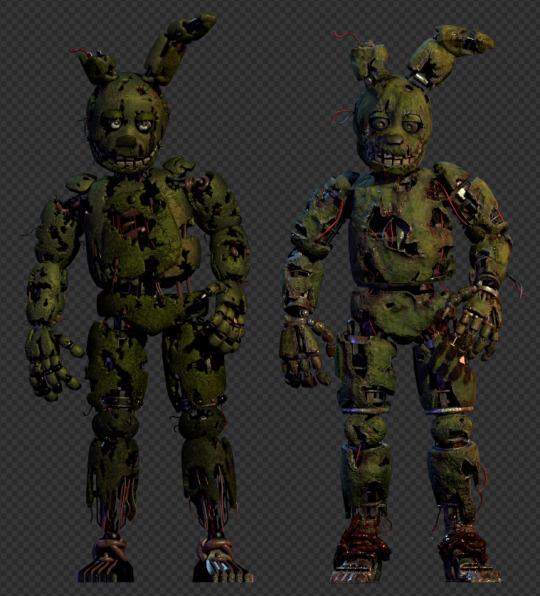#semantic modeling
Explore tagged Tumblr posts
Text
Mythopoesis Carries Data
To write or speak with esoteric density, particularly with something like Sanskrit, gives our language unusually rich semantic presence. If I indicate my Christian name in a form field, that data carries some paltry inferred data with it, perhaps indicating my culture but nothing more. If I indicate one of my Sanskrit names in a form field, that data is thick with orbiting context.
From a Sanskrit name you can tell a lot about what a person believes, or has experienced, or identifies with--it is not just convenient mouth noises to shout and label people. What does Steve "mean"? What does ह्रींमानन्द "mean"? See what I mean?
Here is some data:
Times were already tough, but things got too crazy and even went downhill from there. It's armageddon.
Here is "less" data with richer orbiting context:
कलियुगान्ते, क्षोभाङ्कुरः लोकक्षोभकक्षणं प्रचोदयति।
#ai positivity#sanskrit#mythopoesis#mythology#sacred texts#עברית#information#scripture#data theory#הלכה#דין#esoterica#semantics#شريعة#حقّ#العربية#संस्कृत#क्षोभाङ्कुरः#लोकक्षोभकक्षणः#large language model
2 notes
·
View notes
Text
SEMANTIC TREE AND AI TECHNOLOGIES

Semantic Tree learning and AI technologies can be combined to solve problems by leveraging the power of natural language processing and machine learning.
Semantic trees are a knowledge representation technique that organizes information in a hierarchical, tree-like structure.
Each node in the tree represents a concept or entity, and the connections between nodes represent the relationships between those concepts.
This structure allows for the representation of complex, interconnected knowledge in a way that can be easily navigated and reasoned about.






CONCEPTS
Semantic Tree: A structured representation where nodes correspond to concepts and edges denote relationships (e.g., hyponyms, hyponyms, synonyms).
Meaning: Understanding the context, nuances, and associations related to words or concepts.
Natural Language Understanding (NLU): AI techniques for comprehending and interpreting human language.
First Principles: Fundamental building blocks or core concepts in a domain.
AI (Artificial Intelligence): AI refers to the development of computer systems that can perform tasks that typically require human intelligence. AI technologies include machine learning, natural language processing, computer vision, and more. These technologies enable computers to understand reason, learn, and make decisions.
Natural Language Processing (NLP): NLP is a branch of AI that focuses on the interaction between computers and human language. It involves the analysis and understanding of natural language text or speech by computers. NLP techniques are used to process, interpret, and generate human languages.
Machine Learning (ML): Machine Learning is a subset of AI that enables computers to learn and improve from experience without being explicitly programmed. ML algorithms can analyze data, identify patterns, and make predictions or decisions based on the learned patterns.
Deep Learning: A subset of machine learning that uses neural networks with multiple layers to learn complex patterns.
EXAMPLES OF APPLYING SEMANTIC TREE LEARNING WITH AI.
1. Text Classification: Semantic Tree learning can be combined with AI to solve text classification problems. By training a machine learning model on labeled data, the model can learn to classify text into different categories or labels. For example, a customer support system can use semantic tree learning to automatically categorize customer queries into different topics, such as billing, technical issues, or product inquiries.
2. Sentiment Analysis: Semantic Tree learning can be used with AI to perform sentiment analysis on text data. Sentiment analysis aims to determine the sentiment or emotion expressed in a piece of text, such as positive, negative, or neutral. By analyzing the semantic structure of the text using Semantic Tree learning techniques, machine learning models can classify the sentiment of customer reviews, social media posts, or feedback.
3. Question Answering: Semantic Tree learning combined with AI can be used for question answering systems. By understanding the semantic structure of questions and the context of the information being asked, machine learning models can provide accurate and relevant answers. For example, a Chabot can use Semantic Tree learning to understand user queries and provide appropriate responses based on the analyzed semantic structure.
4. Information Extraction: Semantic Tree learning can be applied with AI to extract structured information from unstructured text data. By analyzing the semantic relationships between entities and concepts in the text, machine learning models can identify and extract specific information. For example, an AI system can extract key information like names, dates, locations, or events from news articles or research papers.
Python Snippet Codes for Semantic Tree Learning with AI
Here are four small Python code snippets that demonstrate how to apply Semantic Tree learning with AI using popular libraries:
1. Text Classification with scikit-learn:
```python
from sklearn.feature_extraction.text import TfidfVectorizer
from sklearn.linear_model import LogisticRegression
# Training data
texts = ['This is a positive review', 'This is a negative review', 'This is a neutral review']
labels = ['positive', 'negative', 'neutral']
# Vectorize the text data
vectorizer = TfidfVectorizer()
X = vectorizer.fit_transform(texts)
# Train a logistic regression classifier
classifier = LogisticRegression()
classifier.fit(X, labels)
# Predict the label for a new text
new_text = 'This is a positive sentiment'
new_text_vectorized = vectorizer.transform([new_text])
predicted_label = classifier.predict(new_text_vectorized)
print(predicted_label)
```
2. Sentiment Analysis with TextBlob:
```python
from textblob import TextBlob
# Analyze sentiment of a text
text = 'This is a positive sentence'
blob = TextBlob(text)
sentiment = blob.sentiment.polarity
# Classify sentiment based on polarity
if sentiment > 0:
sentiment_label = 'positive'
elif sentiment < 0:
sentiment_label = 'negative'
else:
sentiment_label = 'neutral'
print(sentiment_label)
```
3. Question Answering with Transformers:
```python
from transformers import pipeline
# Load the question answering model
qa_model = pipeline('question-answering')
# Provide context and ask a question
context = 'The Semantic Web is an extension of the World Wide Web.'
question = 'What is the Semantic Web?'
# Get the answer
answer = qa_model(question=question, context=context)
print(answer['answer'])
```
4. Information Extraction with spaCy:
```python
import spacy
# Load the English language model
nlp = spacy.load('en_core_web_sm')
# Process text and extract named entities
text = 'Apple Inc. is planning to open a new store in New York City.'
doc = nlp(text)
# Extract named entities
entities = [(ent.text, ent.label_) for ent in doc.ents]
print(entities)
```
APPLICATIONS OF SEMANTIC TREE LEARNING WITH AI
Semantic Tree learning combined with AI can be used in various domains and industries to solve problems. Here are some examples of where it can be applied:
1. Customer Support: Semantic Tree learning can be used to automatically categorize and route customer queries to the appropriate support teams, improving response times and customer satisfaction.
2. Social Media Analysis: Semantic Tree learning with AI can be applied to analyze social media posts, comments, and reviews to understand public sentiment, identify trends, and monitor brand reputation.
3. Information Retrieval: Semantic Tree learning can enhance search engines by understanding the meaning and context of user queries, providing more accurate and relevant search results.
4. Content Recommendation: By analyzing the semantic structure of user preferences and content metadata, Semantic Tree learning with AI can be used to personalize content recommendations in platforms like streaming services, news aggregators, or e-commerce websites.
Semantic Tree learning combined with AI technologies enables the understanding and analysis of text data, leading to improved problem-solving capabilities in various domains.
COMBINING SEMANTIC TREE AND AI FOR PROBLEM SOLVING
1. Semantic Reasoning: By integrating semantic trees with AI, systems can engage in more sophisticated reasoning and decision-making. The semantic tree provides a structured representation of knowledge, while AI techniques like natural language processing and knowledge representation can be used to navigate and reason about the information in the tree.
2. Explainable AI: Semantic trees can make AI systems more interpretable and explainable. The hierarchical structure of the tree can be used to trace the reasoning process and understand how the system arrived at a particular conclusion, which is important for building trust in AI-powered applications.
3. Knowledge Extraction and Representation: AI techniques like machine learning can be used to automatically construct semantic trees from unstructured data, such as text or images. This allows for the efficient extraction and representation of knowledge, which can then be used to power various problem-solving applications.
4. Hybrid Approaches: Combining semantic trees and AI can lead to hybrid approaches that leverage the strengths of both. For example, a system could use a semantic tree to represent domain knowledge and then apply AI techniques like reinforcement learning to optimize decision-making within that knowledge structure.
EXAMPLES OF APPLYING SEMANTIC TREE AND AI FOR PROBLEM SOLVING
1. Medical Diagnosis: A semantic tree could represent the relationships between symptoms, diseases, and treatments. AI techniques like natural language processing and machine learning could be used to analyze patient data, navigate the semantic tree, and provide personalized diagnosis and treatment recommendations.
2. Robotics and Autonomous Systems: Semantic trees could be used to represent the knowledge and decision-making processes of autonomous systems, such as self-driving cars or drones. AI techniques like computer vision and reinforcement learning could be used to navigate the semantic tree and make real-time decisions in dynamic environments.
3. Financial Analysis: Semantic trees could be used to model complex financial relationships and market dynamics. AI techniques like predictive analytics and natural language processing could be applied to the semantic tree to identify patterns, make forecasts, and support investment decisions.
4. Personalized Recommendation Systems: Semantic trees could be used to represent user preferences, interests, and behaviors. AI techniques like collaborative filtering and content-based recommendation could be used to navigate the semantic tree and provide personalized recommendations for products, content, or services.
PYTHON CODE SNIPPETS
1. Semantic Tree Construction using NetworkX:
```python
import networkx as nx
import matplotlib.pyplot as plt
# Create a semantic tree
G = nx.DiGraph()
G.add_node("root", label="Root")
G.add_node("concept1", label="Concept 1")
G.add_node("concept2", label="Concept 2")
G.add_node("concept3", label="Concept 3")
G.add_edge("root", "concept1")
G.add_edge("root", "concept2")
G.add_edge("concept2", "concept3")
# Visualize the semantic tree
pos = nx.spring_layout(G)
nx.draw(G, pos, with_labels=True)
plt.show()
```
2. Semantic Reasoning using PyKEEN:
```python
from pykeen.models import TransE
from pykeen.triples import TriplesFactory
# Load a knowledge graph dataset
tf = TriplesFactory.from_path("./dataset/")
# Train a TransE model on the knowledge graph
model = TransE(triples_factory=tf)
model.fit(num_epochs=100)
# Perform semantic reasoning
head = "concept1"
relation = "isRelatedTo"
tail = "concept3"
score = model.score_hrt(head, relation, tail)
print(f"The score for the triple ({head}, {relation}, {tail}) is: {score}")
```
3. Knowledge Extraction using spaCy:
```python
import spacy
# Load the spaCy model
nlp = spacy.load("en_core_web_sm")
# Extract entities and relations from text
text = "The quick brown fox jumps over the lazy dog."
doc = nlp(text)
# Visualize the extracted knowledge
from spacy import displacy
displacy.render(doc, style="ent")
```
4. Hybrid Approach using Ray:
```python
import ray
from ray.rllib.agents.ppo import PPOTrainer
from ray.rllib.env.multi_agent_env import MultiAgentEnv
from ray.rllib.models.tf.tf_modelv2 import TFModelV2
# Define a custom model that integrates a semantic tree
class SemanticTreeModel(TFModelV2):
def __init__(self, obs_space, action_space, num_outputs, model_config, name):
super().__init__(obs_space, action_space, num_outputs, model_config, name)
# Implement the integration of the semantic tree with the neural network
# Define a multi-agent environment that uses the semantic tree model
class SemanticTreeEnv(MultiAgentEnv):
def __init__(self):
self.semantic_tree = # Initialize the semantic tree
self.agents = # Define the agents
def step(self, actions):
# Implement the environment dynamics using the semantic tree
# Train the hybrid model using Ray
ray.init()
config = {
"env": SemanticTreeEnv,
"model": {
"custom_model": SemanticTreeModel,
},
}
trainer = PPOTrainer(config=config)
trainer.train()
```
APPLICATIONS
The combination of semantic trees and AI can be applied to a wide range of problem domains, including:
- Healthcare: Improving medical diagnosis, treatment planning, and drug discovery.
- Finance: Enhancing investment strategies, risk management, and fraud detection.
- Robotics and Autonomous Systems: Enabling more intelligent and adaptable decision-making in complex environments.
- Education: Personalizing learning experiences and providing intelligent tutoring systems.
- Smart Cities: Optimizing urban planning, transportation, and resource management.
- Environmental Conservation: Modeling and predicting environmental changes, and supporting sustainable decision-making.
- Chatbots and Virtual Assistants:
Use semantic trees to understand user queries and provide context-aware responses.
Apply NLU models to extract meaning from user input.
- Information Retrieval:
Build semantic search engines that understand user intent beyond keyword matching.
Combine semantic trees with vector embeddings (e.g., BERT) for better search results.
- Medical Diagnosis:
Create semantic trees for medical conditions, symptoms, and treatments.
Use AI to match patient symptoms to relevant diagnoses.
- Automated Content Generation:
Construct semantic trees for topics (e.g., climate change, finance).
Generate articles, summaries, or reports based on semantic understanding.
RDIDINI PROMPT ENGINEER
#semantic tree#ai solutions#ai-driven#ai trends#ai system#ai model#ai prompt#ml#ai predictions#llm#dl#nlp
3 notes
·
View notes
Text
Do you know how the procurement and supply chain world is about to change?
0 notes
Text
currently debating if i should use semantic mapping or the frayer model to teach vocabulary to the 4th grade class
#i love semantic mapping but#i’m leaning toward the frayer model for this one because of the words i was given by my mentor teacher#i know i will be using context clues and breaking down words into suffixes and prefixes to help them understand what each word means#logan.txt#teacher tag#<- new tag
1 note
·
View note
Text
#graphrag#esg sustainability#semantic graph model#esg domains#knowledge graph llm#esg and nlp#graph rag llm
0 notes
Text
Navigation with Large Language Models: Problem Formulation and Overview
Subscribe .tfa75ee45-e278-4c0e-8bbc-28e997a9f081 { color: #fff; background: #222; border: 1px solid transparent; border-radius: undefinedpx; padding: 8px 21px; } .tfa75ee45-e278-4c0e-8bbc-28e997a9f081.place-top { margin-top: -10px; } .tfa75ee45-e278-4c0e-8bbc-28e997a9f081.place-top::before { content: “”; background-color: inherit; position: absolute; z-index: 2; width: 20px; height: 12px; }…

View On WordPress
#goal-directed-exploration#language-frontier-guide#large-language-models#llm-heuristics#navigation-with-llm#polling-llms#scoring-subgoals#semantic-scene-understanding
0 notes
Text
Power BI Semantic Model Guide for 2024
Introduction:
As we step into the dynamic landscape of 2024, the role of data in decision-making has never been more critical. Businesses are continually seeking ways to harness the power of their data, and Microsoft's Power BI remains at the forefront of empowering organizations with actionable insights. In this blog post, we delve deep into the Power BI Semantic Model and explore how it has evolved to meet the demands of the data-driven era.

Understanding the Power BI Semantic Model:
The Power BI Semantic Model is the backbone of Power BI, providing a robust framework for organizing and interpreting data. In 2024, Microsoft has introduced several enhancements to the Semantic Model, aiming to elevate user experience and deliver more meaningful insights.
Unified Modeling Experience:
In response to user feedback, Microsoft has revamped the modeling experience within Power BI. The 2024 update focuses on a unified modeling approach, streamlining the process of creating relationships, measures, and calculations. The intuitive interface caters to both beginners and seasoned data professionals, ensuring a seamless modeling journey.
Enhanced Data Connectivity:
Recognizing the diversity of data sources, Power BI now boasts expanded connectivity options. The Semantic Model is designed to effortlessly integrate with a plethora of data platforms, including cloud-based solutions and on-premises databases. This versatility ensures that organizations can consolidate their data from various sources, fostering a more holistic approach to analysis.
AI-Driven Insights:
Artificial Intelligence (AI) has become an integral part of modern analytics. Power BI's Semantic Model now incorporates advanced AI capabilities to generate insightful recommendations. From identifying key trends to suggesting relevant visualizations, the enhanced AI integration elevates the platform's analytical capabilities, making it easier for users to derive value from their data.
Performance Optimization:
Responding to the need for faster and more efficient data processing, Microsoft has invested in performance optimization for the Semantic Model. With improved query response times and optimized data compression techniques, Power BI users can expect a smoother and more responsive analytics experience.
Advanced DAX Functions:
The Data Analysis Expressions (DAX) language is the heart of the Power BI Semantic Model. In 2024, Microsoft has introduced a range of new DAX functions, empowering users to create more complex and sophisticated calculations. Whether it's time-based analysis, statistical modeling, or predictive analytics, the expanded DAX functionality provides users with unprecedented flexibility.
Collaborative Workspace:
Collaboration is key in today's interconnected business environment, and the significance of effective teamwork is further accentuated by leveraging specialized expertise, such as Power BI consulting services. Power BI's Semantic Model now features enhanced collaboration tools provided by these consulting services, allowing multiple users to seamlessly work on the same model simultaneously. Real-time collaboration, facilitated by Power BI consulting services, ensures that cross-functional teams can efficiently and collaboratively contribute to the development of a robust semantic layer, fostering a unified approach to data analysis and decision-making. This integration of Power BI consulting services enhances not only the collaborative aspects of the Semantic Model but also amplifies the overall efficiency of the analytics workflow.
Conclusion:
In conclusion, the Power BI Semantic Model for 2024 stands as a testament to Microsoft's commitment to empowering businesses with cutting-edge analytics capabilities. The unified modeling experience, expanded data connectivity, AI-driven insights, performance optimization, advanced DAX functions, and collaborative workspace features collectively position Power BI as a formidable tool in the hands of data enthusiasts. As organizations strive to make data-driven decisions in the ever-evolving landscape of 2024, embracing the Power BI Semantic Model is a strategic step towards unlocking the true potential of their data assets.
0 notes
Text
Blockchain Design and Modelling
Ontology engineering, along with semantic Web technologies, allow the semantic development and modeling of the operational flow required for blockchain design. The semantic Web, in accordance with W3C, provides a common framework that allows data to be shared and reused across application, enterprise, and community boundaries and can be seen as an integrator for various content, applications and…

View On WordPress
0 notes
Text
Yandere! Android x Reader (I)


It is the future and you have been tasked to solve a mysterious murder that could jeopardize political ties. Your assigned partner is the newest android model meant to assimilate human customs. You must keep his identity a secret and teach him the ways of earthlings, although his curiosity seems to be reaching inappropriate extents.
Yes, this is based on Asimov’s “Caves of Steel” because Daneel Olivaw was my first ever robot crush. I also wanted a protagonist that embraces technology. :)
Content: female reader, AI yandere, 50's futurism
[Part 2] | [More original works]

You follow after the little assistant robot, a rudimentary machine invested with basic dialogue and spatial navigation. It had caused quite the ruckus when first introduced. One intern - well liked despite being somewhat clumsy at his job - was sadly let go as a result. Not even the Police is safe from the threat of AI, is what they chanted outside the premises.
"The Commissioner has summoned you, (Y/N)."
That's how it greeted you earlier, clacking its appendage against the open door in an attempt to simulate a knock.
"Do you know why my presence is needed?" You inquire and wait for the miniature AI to scan the audio message.
"I am not allowed to mention anything right now." It finally responds after agonizing seconds.
It's an alright performance. You might've been more impressed by it, had you not witnessed first hand the Spacer technology that could put any modern invention here on Earth to shame. Sadly the people down here are very much against artificial intelligence. There have been multiple protests recently, like the one in front of your building, condemning the latest government suggestion regarding automation. People fear for their jobs and safety and you don't necessarily blame them for having self preservation. On the other hand, you've always been a supporter of progress. As a child you devoured any science fiction book you could get your hands on, and now, as a high ranked police detective you still manage to sneak away and scan over articles and news involving the race for a most efficient computer.
You close the door behind you and the Commissioner puts his fat cigarette out, twisting the remains into the ashtray with monotonous movements as if searching for the right words.
"There's been a murder." Is all he settles on saying, throwing a heavy folder in your direction. A hologram or tablet might've been easier to catch, but the man, like many of his coworkers, shares a deep nostalgia for the old days.
You flip through the pages and eventually furrow your eyebrows.
"This would be a disaster if it made it to the news." You mumble and look up at the older man. "Shouldn't this go to someone more experienced?"
He twiddles with his grey mustache and glances out the fake window.
"It's a sensitive case. The Spacers are sending their own agent to collaborate with us. What stands out to you?"
You narrow your eyes and focus on the personnel sheet. What's there to cause such controversy? Right before giving up, departing from the page, you finally notice it: next to the Spacer officer's name, printed clearly in black ink, is a little "R." which is a commonly used abbreviation to indicate something is a robot. The chief must've noticed your startled reaction and continues, satisfied:
"You understand, yes? They're sending an android. Supposedly it replicates a human perfectly in terms of appearance, but it does not possess enough observational data. Their request is that whoever partners up with him will also house him and let him follow along for the entirety of the mission. You're the only one here openly supporting those tin boxes. I can't possibly ask one of your higher ups, men with wives and children, to...you know...bring that thing in their house."
You're still not sure whether to be offended by the fact that your comfort seems to be of less priority compared to other officers. Regardless of the semantics, you're presently standing at the border between Earth and the Spacer colony, awaiting your case partner. A man emerges from behind a security gate. He's tall, with handsome features and an elegant walk. He approaches you and you reach for a handshake.
"Is the android with you?" You ask, a little confused.
"Is this your first time seeing a Spacer model?" He responds, relaxed. "I am the agent in your care. There is no one else."
You take a moment to process the information, similar to the primitive machine back at your office. Could it be? You've always known that Spacer technology is years ahead, but this surpasses your wildest dreams. There is not a single detail hinting at his mechanical fundament. The movement is fluid, the speech is natural, the design is impenetrable. He lifts the warm hand he'd used for the handshake and gently presses a finger against your chin in an upwards motion. You find yourself involuntarily blushing.
"Your mouth was open. I assumed you'd want it discreetly corrected." He states, factually, with a faint smile on his lips. Is he amused? Is such a feeling even possible? You try your best to regain some composure, adjusting the collar of your shirt and clearing your throat.
"Thank you and please excuse my rudeness. I was not expecting such a flawless replica. Our assistants are...easily recognizable as AI."
"So I've been told." His smile widens and he checks his watch. You follow his gesture, still mesmerized, trying to find a single indicator that the man standing before you is indeed a machine, a synthetic product.
Nothing.
"Shall we?" He eyes the exit path and you quickly lead him outside and towards public transport.
He patiently waits for your fingerprint scan to be complete. You almost turn around and apologize for the old, lagging device. As a senior detective, you have the privilege of living in the more spacious, secured quarters of the city. And, since you don't have a family, the apartment intended for multiple people looks more like a luxury adobe. Still, compared to the advanced way of the Spacers, this must feel like poverty to the android.
At last, the scanner beeps and the door unlocks.
"Heh...It's a finicky model." You mumble and invite him in.
"Yes, I'm familiar with these systems." He agrees with you and steps inside, unbuttoning his coat.
"Oh, you've seen this before?"
"In history books."
You scratch your cheek and laugh awkwardly, wondering how much of his knowledge about the current life on Earth is presented as a museum exhibit when compared to Spacer society.
"I'm going to need a coffee. I guess you don't...?" Your words trail as you await confirmation.
"I would enjoy one as well, if it is not too much to ask. I've been told it's a social custom to 'get coffee' as a way to have small talk." The synthetic straightens his shirt and looks at you expectantly.
"Of course. I somehow assumed you can't drink, but if you're meant to blend in with humans...it does make sense you'd have all the obvious requirements built in."
He drags a chair out and sits at the small table, legs crossed.
"Indeed. I have been constructed to have all the functions of a human, down to every detail."
You chuckle lightly. Well, not like you can verify it firsthand. The engineers back at the Spacer colony most likely didn't prepare him for matters considered unnecessary.
"I do mean every detail." He adds, as if reading your mind. "You are free to see for yourself."
You nearly drop the cup in your flustered state. You hurry to wipe the coffee that spilled onto the counter and glance back at the android, noticing a smirk on his face. What the hell? Are they playing a prank on you and this is actually a regular guy? Some sort of social experiment?
"I can see they included a sense of humor." You manage to blurt out, glaring at him suspiciously.
"I apologize if I offended you in any way. I'm still adjusting to different contexts." The android concludes, a hint of mischief remaining on his face. "Aren't rowdy jokes common in your field of work?"
"Uh huh. Spot on." You hesitantly place the hot drink before him.
Robots on Earth have always been built for the purpose of efficiency. Whether or not a computer passes the Turing Test is irrelevant as long as it performs its task in the most optimal, rational way. There have been attempts, naturally, to create something indistinguishable from a human, but utility has always taken precedence. It seems that Spacers think differently. Or perhaps they have reached their desired level of performance a long time ago, and all that was left was fiddling with aesthetics. Whatever the case is, you're struggling not to gawk in amazement at the man sitting in your kitchen, stirring his coffee with a bored expression.
"I always thought - if you don't mind my honesty - that human emotions would be something to avoid when building AI. Hard to implement, even harder to control and it doesn't bring much use."
"I can understand your concerns. However, let me reassure you, I have a strict code of ethics installed in my neural networks and thus my emotions will never lead to any destructive behavior. All safety concerns have been taken into consideration.
As for why...How familiar are you with our colony?" The android takes a sip of his coffee and nods, expressing his satisfaction. "Perhaps you might be aware, Spacers have a declining population. Automated assistants have been part of our society for a long time now. What's lacking is humans. If the issue isn't fixed, artificial humans will have to do."
You scoff.
"What, us Earth men aren't good enough to fix the birth rates? They need robots?"
You suddenly remember the recipient of your complaint and mutter an apology.
"Well, I'm sure you'd make a fine contender. Sadly I can't speak for everyone else on Earth." The man smiles in amusement upon seeing the pale red that's now dusting your cheeks, then continues: "But the issue lies somewhere else. Spacers have left Earth a long time ago and lived in isolation until now. Once an organism has lost its immune responses to otherwise common pathogens, it cannot be reintegrated."
True. Very few Earth citizens are allowed to enter the colony, and only do so after thorough disinfection stages, proving they are disease free as to not endanger the fragile health of the Spacers living in a sterile environment. You can only imagine the disastrous outcome if the two species were to abruptly mingle. In that case, equally sterile machinery might be their only hope.
Your mind wanders to the idea. Dating a robot...How's that? You sheepishly gaze at the android and study his features. His neatly combed copper hair, the washed out blue eyes, the pale skin. Probably meant to resemble the Spacers. You shake your head.
"A-anyways, I'll go and gather all the case files I have. Then we can discuss our first steps. Do feel at home."
You rush out and head for your office. Focus, you tell yourself mildly annoyed.
While you search for the required paperwork - what a funny thing to say in this day and age - he will certainly take up on your generous offer to make himself comfortable. The redhaired man enters the living room, scanning everything with curious eyes. He stops in front of a digital frame and slides through the photos. Ah, this must be your Police Academy graduation. The year matches with the data he's received on you. Data files he might've read one too many times in his unexplained enthusiasm. This should be you and the Commissioner; Doesn't match the description of your father, and he seems too old to be a spouse or boyfriend. Additionally, the android distinctly recalls the empty 'Relationship' field.
"Old photos are always a tad embarrassing. I suppose you skipped that stage."
He jolts almost imperceptibly and faces you. You have returned with a thin stack of papers and a hologram projector.
"I've digitalized most files I received, so you don't have to shuffle a bunch of paper around." You explain.
"That is very useful, thank you." He gently retrieves the small device from your hand, but takes a moment before removing his fingers from yours. "I predict this will be a successful partnership."
You flash him a friendly smile and gesture towards the seating area.
"Let's get to work, then. Unless you want to go through more boring albums." You joke as you lower yourself onto the plush sofa.
The synthetic human joins you at an unexpectedly close proximity. You wonder if proper distance differs among Spacers or if he has received slightly erroneous information about what makes a comfortable rapport.
"Nothing boring about it. In fact, I'd say you and I are very similar from this point of view." He tells you, placing the projector on the table.
"Oh?"
"Your interest in technology and artificial intelligence is rather easy to infer." The man continues, pointing vaguely towards the opposing library. "Aside from the briefing I've already received about you, that is."
"And that is similar to...the interest in humans you've been programmed to have?" You interject, unsure where this conversation is meant to lead.
"Almost."
His head turns fully towards you and you stare back into his eyes. From this distance you can finally discern the first hints of his nature: the thin disks shading the iris - possibly CCD sensors - are moving in a jagged, mechanical manner. Actively analyzing and processing the environment.
"I wouldn't go as far as to generalize it to all humans.
Just you."
#yandere#yandere x darling#yandere x reader#yandere x you#yandere male#male yandere#male yandere x reader#yandere robot#yandere android#robot x human#android x reader#robot x reader#yandere scenarios#yandere imagines#yandere oc#yandere original character#yandere imagine#yandere fic
3K notes
·
View notes
Note
Can you please explain your dialogue theory of fanfiction?
In short, that dialogue, more than anything, makes or breaks a fanfic. What do posts like "He would not fucking say that" and "They would NOT have communication skills that good" have in common? Talk. Characters expressing themselves to one another. The faithful recreation of identifiable speech patterns is weighted heavily in the evaluation of a fic's quality. By "speech patterns" I do not just mean the semantic content of a given character's expression, but idiosyncrasies of style and slang, vocabulary and idiom, even gesture, musicality, and rhythm.
Of course believable dialogue is far from the only thing that makes a good fanfic Good. And there are forms of fic writing, particularly highly abbreviated ones like drabbles and ficlets, that in practice tend to de-emphasize its significance. But if we are talking about the romantic, erotic shippy stuff that is the meat and potatoes of online fandom, dialogue does the heaviest lifting short of the consummation itself. Arguably more so! It's the real keystone to the catharsis, and often the catalyst for it. Is there a confession occurring? A provocation? An evasion or ultimatum? Zoom out, big picture: What is the most potent and fundamental mechanic for developing complexity, tension, and transformation within a relationship, getting it to go from one thing to another? Making these two idiots talk to each other! Often clumsily and indirectly and maladaptively, at the worst possible time and in the worst possible situation, about anything or everything but what they should be — but talk they usually do.
What makes fanfic specifically so challenging and rewarding in this regard is that the talking is as much a feat of translation as invention, because both reader and writer are working off an existing model. Liberties taken with plot, form, and even narrative voice have wider buffer zones; you can get creative with circumventing the events of canon while still conforming to its emotional and substantive essence.
But the training wheels come off the moment you open your mouth to speak in another character's voice. And man, nothing will break a reader's immersion quite like he would not fucking say that.
8K notes
·
View notes
Text
Holy shit. Gemini Pro 2.5 can, on the basis of a (very incomplete) grammatical description + dictionary of one of my conlangs:
compose novel, grammatically correct sentences in this conlang
understand sentences I have written in the conlang (even when I make grammatical errors myself!) and reply with its own novel, grammatically correct, and contextually appropriate sentences
write a (mostly) grammatically correct short story in this conlang
This is from a written description of the grammar, together with a dictionary. This conlang is nowhere online, so it's not in the training data. The grammar description itself has relatively few example sentences, it's mostly morphological tables and written descriptions of grammatical features.
Wow! That's really something to me, above and beyond what I already knew LLMs could do.
The language has some quite subtle features involving things like animacy hierarchy based morphosyntactic shifts that involve thinking about the semantics + pragmatic relationships between certain words (in a conlang! not words the Gemini base model already knows!) and selecting different constructions appropriately. I guess that's what all of grammar is, but the animacy hierarchy stuff impressed me especially.
The biggest errors the model made were due to weird text encoding issues in the grammar PDF that confused it, but it usually managed to figure out how to make a correct sentence in the end.
This is pretty impressive to me.
260 notes
·
View notes
Text
here eat up autistics
87 notes
·
View notes
Text
#graphrag#esg sustainability#semantic graph model#esg domains#knowledge graph llm#esg and nlp#graph rag llm
0 notes
Note
Forgive me if this is a silly question + no pressure to answer it ofc, but what would you 'replace' addiction with when discussing patterns of harmful and compulsive substance use? I agree with your views re: the disease model and its failure to engage with the material contexts in which these behaviours often arise, but I also find addiction a useful concept for talking about my own experiences with substance use (including severe physical dependency). It's a nebulous, imperfect term, but when someone calls themselves a [substance] addict you implicitly understand something of their relationship with that substance. For some the relationship is mutable, whereas for others it's a pattern that repeats throughout their lives; both can claim to have experienced addiction, as far as I'm concerned. But there are certain behaviours and attitudes that are very common amongst self-described addicts, and these commonalities form the basis of many peer support networks. Without the conceptual framework of addiction, would we not be even further isolated?
first of all i disagree that addiction is even a useful shorthand, and i think you actually contradict this notion yourself in this ask. if someone tells me they're an addict, do they mean they're a 12-stepper who views substances as external impositions onto the psyche curable by prayer to protestant god? do they mean they're physically dependent on a substance? that they have been in the past? that they subjectively feel out of control of their substance use? that it's escalating, or has been in the past? that it has cost them jobs or friendships? that it is subjectively enjoyable but exacts health effects they dislike? that they prioritise it over other elements of their life? that they use it as a form of escapism, as a form of self punishment, for some kind of spiritual enlightenment, as pain relief, as a distraction...?
if i care about the answers to these questions then the label addiction means nothing to me. i find out these answers by talking to people and the explanations are simply not summed up by that one word. i have met self-identified addicts with definitions of the term beyond my wildest conceptions & i'm sure i will continue to do so. "it's shorthand" is not factually workable if no one can even define what precisely is ostensibly being shorthanded. so on a basic level, no i actually do not think anything is being semantically sacrificed in challenging the idea of 'addiction' because it's a political dragnet, not a coherent psychological or experiential concept.
second, in a hypothetical world where the behaviour of using substances recreationally isn't pathologised, i don't really care that strongly what people do or don't call it. but i don't live in that world, i live in the one where the idea of 'addiction' is a clinical discourse born of a degeneracy theory discourse intended to produce economically useful citizens by pathologising inebriation. so i not only don't see the value in caping for the term, i actually think continuing to rely on these discourses is actively harmful. incidentally, and not to elevate my personal experience here, but some of the most heinous shit people have ever said to me wrt my own substance use has come from self-identified addicts too. because again, this term is not rooted in some kind of care model but in a political discourse intended to eliminate the behaviours it describes.
this to say: i'm not proposing an alternate name for addiction because i don't think it's actually a useful or liberating term, let alone a coherent description of any one psychological or personal experience. there are specific terms i sometimes use as far as they go: i might talk about physical dependency where applicable, or about feeling compelled to use substances (though i am becoming increasingly disillusioned with notions of 'compulsion' for basically the same reason, i use that term only as a purely subjective description, and frankly i may move off recourse to it at all).
but i don't see that the umbrella term 'addiction' is actually unified by anything except a political logic of attempted discipline & control. if i want to talk to people personally about our experiences using drugs then i already have quite a bit of vocabulary beyond the addiction term that i need & like to use for myself, & i solicit the same from the people i talk to wrt their own experiences & interpretive frameworks. i don't think using the addiction framework is good or even neutral in a politico-moral sense, and its conceptual heterogeneity means it's not even useful philosophically. what it does, and what it exists to do, is obscure the individual into a pathologising discourse intended to correct and punish a deviant behaviour.
100 notes
·
View notes
Text
Springtrap DBD model analysis and opinion
All images are from the official Dead By Daylight twitter account, while the model dissection images are from @LukaszBorges on twitter, the image in front of you is from @Croco_Art_ also on twitter

Springtrap is finally in DBD and we got to see his model and i want to do an analysis on it and give it my full on thoughts!
Now the model right from the outset is really faithful to the original Scott Cawthon Render. The pose, the vibe and it all practically screams "Yup this is William Afton aka Springtrap in HD gory glory ready to murder people in the Fog!"
But there are differences especially when you put the two renders/models side-by-side. The first thing were covering first is the suit.
The first thing to be noticed besides quality of the models (because DBD's model is the objectively better one here for the most part) is the texture of the DBD model is more of an actual fabric (something reminiscence of stretchy Fleece fabric) and is a slightly different color of green. The color of as described by my friend @amcomix, "As a barf green" (even thought the color is more of a Olive Green but eh semantics) meanwhile the original Scott model had a more "Rotten green color".
Now this isn't to say that the DBD model is bad or that these are complaints, ultimately I think the coloration and the new texture were required for this model and ultimately make it better than the current official Scott model.
Another thing to note is that there's a lot more wires on the DBD model, while the Scott's model only has like gray wires and fleshy tendrils. Another thing to notice is that the withering is different between the two models, while the withering placements and shapes are mostly similar. There are small yet obvious changes to see. Some spots of withering have either gotten bigger, smaller, wider, longer, etc, And the general shape of the tears in the DBD model is a lot more natural and what you expect from wear and tear. Where as Scott's withering is more jaggy and square-ish. (Also there's like an extra button on the DBD model compared the Scott one).
Now all of these difference in my opinion are for the better and are harmless. For one the new natural withering is great, the added wires makes sense, and the coloration and new textures really make this model better than the original springtrap in my opinion. But this nxt observation is one where I'm a tiny bit miffed.. SPRINGTRAP IS MISSING HIS DARK GREEN UNDER BELLY! a-and his dark green ear highlights i-i guess... BUT THE BELLY IS THE THING THAT ACTUALLY MATTERS!
Now this might be the most noticeable thing between the two models, you see in DBD model... the belly is just gone like it's fully removed and considering how FNaF animatronics usually have a belly that's a secondary color most of the time, seeing Springtrap without it is weird and imo just makes him feels a bit incomplete. Like yeah i'm fine with ears not having the undertones because they don't get noticed by people much, while the belly is big and noticeable so literally removing is gonna be noticed and focused on (god i'm sounding very weird with my words... bleh). Now this doesn't detract my stance that DBD's Springtrap model is the best, its just a blemish on a great model for me.
I guess the last thing to mention when it comes to the suits are the eyes. When it comes to the eyes of Scott's model they are pretty decent all around, gray iris, kinda dull bloodshot sclera's, the eyes are clearly just a texture on the model but it works and the expression in the render shows Springtrap as kinda tired almost barely clinging onto life... unless were looking at the UCN profile.... he just looks like he's about to answer a question for the teacher.

Where as with DBD model The sclera's are purely gray and the iris's and pupils are clearly indented. Almost as if he's fixated on something or someone. Now it's also good to keep in mind that DBD Springtrap is more animated and emotive than regular Springtrap. And you can tell the eyes were changed to give Springtrap more emotion when he kills you or when he chasing you or when he's in the lobby or when he's in promotional material. as you can see here.




Now do I think this change is bad... UH NO, you see Springtrap having more emotive eyes is a good thing because it helps portray Springtrap character and plus most fans would want that and so far its working.
Now that the suit has been covered let's move onto the endo and the corpse, Now lets start off with his feet because holy shit DBD fix them. Now the problem with Scott's Springtrap feet is that they look out of place... by that i mean the just like have lines of flash and fleshy tendrils on the endoskeleton feet. Now with the DBD model it still keeps the feet the way they are but actually makes them look more... like it can actually make sense... The metal endo feet are now covered in dried blood and the flesh tendrils are now more like intestines that have fallen out of Afton's body and are used to keep his feet from falling off the suit he's trapped in.

Now the rest of the endo is pretty much what you expect from a Springlock endo. But the corpse is completely different between the two, Springtrap's original corpse looked like a giant maroon head with big bulging eyes placed where an endo skeleton's head is suppose to be with a bunch of "Flash" tendrils big and small wrapping around the main torso area and all around body. It wasn't bad and there were ways to make it scary (the rare screens are a perfect example and many animations have used it to peoples advantage too).
Where as the DBD model looks like an actual tortured human corpse that is decaying yet in some way clinging onto life. You can see his rib cages, his neck and his pelvis, the only things that are not there is the eyes (because those eyes are a separate rig), feet and hands and those are because those are apart of the endoskeleton side of the model. Seriously DBD took the original model and gave it a whole glorious overhaul, not to say that the original model is bad because I still do love it and i think the model should still be used by new fans and more. But DBD's model is just now my new favorite.



------------------------------------------------------------------------------ Final thoughts i love this model and everything Springtrap offers to DBD and i might talk about the lore and the characterization and the costumes and Animations and voice lines/voice work related to Springtrap's chapter soon but for now this is my unprofessional and very opinionated model analysis.
MechaWriterPerson out.
#fnaf#five nights at freddy's#springtrap#dead by daylight#dbd#william afton#toxic springtrap#glitchtrap#clown springtrap#yellow rabbit#scraptrap#burntrap#flaming springtrap#curse springtrap#matthew lillard#freddy fazbear#dave miller#fnaf movie
70 notes
·
View notes
Text
Navigation with Large Language Models: Discussion and References
Subscribe .t1f01df44-f2da-4be0-b7c8-94943f1b14e8 { color: #fff; background: #222; border: 1px solid transparent; border-radius: undefinedpx; padding: 8px 21px; } .t1f01df44-f2da-4be0-b7c8-94943f1b14e8.place-top { margin-top: -10px; } .t1f01df44-f2da-4be0-b7c8-94943f1b14e8.place-top::before { content: “”; background-color: inherit; position: absolute; z-index: 2; width: 20px; height: 12px; }…

View On WordPress
#goal-directed-exploration#language-frontier-guide#large-language-models#llm-heuristics#navigation-with-llm#polling-llms#scoring-subgoals#semantic-scene-understanding
0 notes